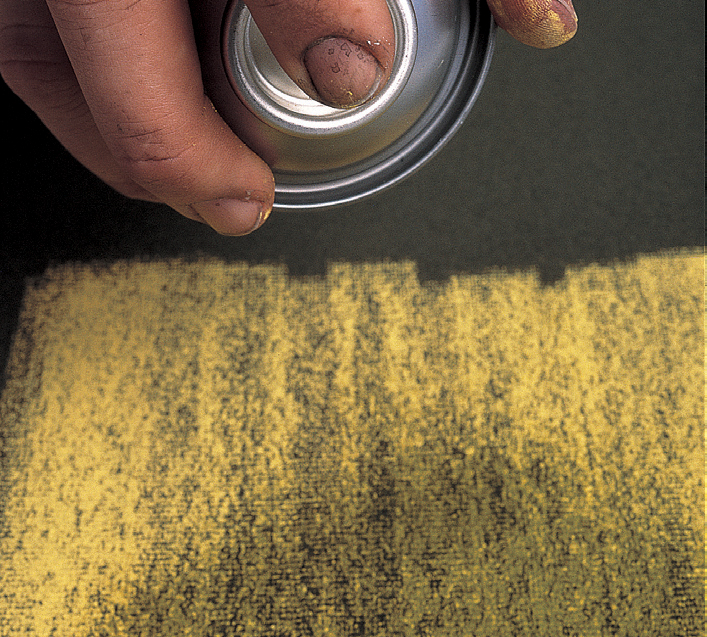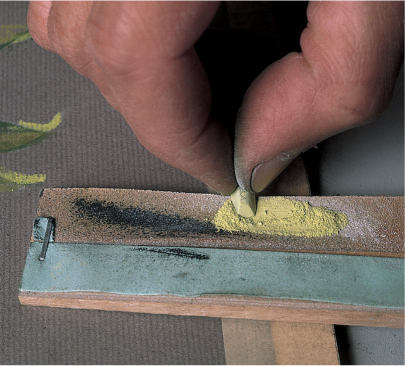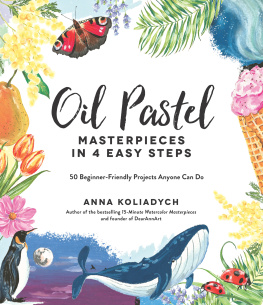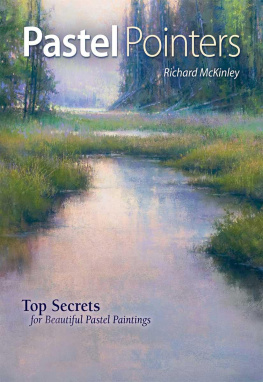The Art of Pastel
WITH W ILLIAM S CHNEIDER , M ARLA B AGGETTA, AND N ATHAN R OHLANDER
D ESIGNED BY S HELLEY B AUGH
P ROJECT E DITOR: R EBECCA J. R AZO
P RODUCTION A RTIST: D EBBIE A IKEN

Contents
C HAPTER 1:
I NTRODUCTION TO T HE A RT OF P ASTEL
C HAPTER 2:
P ASTEL WITH W ILLIAM S CHNEIDER
C HAPTER 3:
P ASTEL WITH M ARLA B AGGETTA
C HAPTER 4:
O IL P ASTEL WITH N ATHAN R OHLANDER
C HAPTER 1
I NTRODUCTION TO The Art of Pastel
The velvety strokes of pastel have enchanted artists for more than a century. From airy strokes and swift, bold marks to soft hues and vibrant shapes, the versatility of pastel makes this medium suitable for a wide range of subjects and moods. A comprehensive guide filled with easy-to-follow step-by-step demonstrations, The Art of Pastel features three accomplished artists who offer their unique insights and methods of instruction for using soft, hard, and oil pastel to create beautiful portraits, rich landscapes, colorful floral scenes, and many other works designed to appeal to a variety of artistic sensibilities. In this book, you will also learn about color theory, as well as how to choose pastels, work with supports, store and display your work, set up your studio, and create various textures using several different techniques. Discover just how fun and rewarding working in pastel can be!
Tools and Materials
You dont need many supplies to begin painting in pastel; unlike oil or acrylic paints, pastels dont require additives or brushes. All you really need to get started is a set of pastels and a variety of papers (or supports). Then just add a few additional tools and materials described on these pages, and youll be ready! (For oil pastel materials, see .)
P URCHASING S OFT P ASTELS
Pastels are available in several forms, including oil pastels; hard, clay-based pastel sticks; pastel pencils; and soft pastels, which are chalklike sticks. Soft pastels produce a beautiful, velvety texture and are easy to blend with your fingers or a cloth. When purchasing pastels, keep in mind that pastel colors are mixed on the paper as you paint, rather than premixed on a palette. (See .) It is helpful to buy a wide range of colors in various valueslights, mediums, and darksso you will always have the color you want readily at hand.
A PPLYING FIXATIVE
Because soft pastels have less binder than hard pastels, they crumble easily, and your finished work can be smudged. Many artists use some type of spray-on sealer or fixative to set their work and prevent it from smearing. (See the demonstration at right.) Some artists dont fix their paintings because they dont like the way the varnish affects the quality of the pastel. Instead they preserve the artwork by keeping the layers of pastel very thin as they paint. Then they tap the support several times so that the excess pigment falls off. To preserve your painting, you may want to have it double-matted and framed under UV light-protected glass. A pastel painting thats properly mounted on archival paper will last for centuries.

Gathering Extras There are other tools that will help you as you paint, such as scissors to trim supports; vine charcoal to layout designs (its easy to erase and can be painted over with pastel); a sand paper block as a sharpener; a paper stump for blending; and a razor blade to break the pastels cleanly. You can also paint over your work with denatured alcohol on a soft brush to wash the color thoroughly into the paper.

Picking Soft Pastels Here is a basic set (shown above) that consists of an assortment of 90 medium soft pastels, another assortment of 40 very soft half-sticks, and a set of 24 deep darks. If youve never worked in soft pastel, you might want to invest in a 45- or 60-stick set created specifically for beginners. Look for a set that has a wide range of reds, blues, and yellows. If you prefer to buy individual colors, start with black, white, and four values (3, 5, 7, and 9) of permanent red, ultramarine blue deep, and cadmium yellow light (See for a description of the numbering system.) You can create additional tones by layering and blending these basics, and you can always add more colors later as you develop your own style and preferred palette of colors.

Fixing, Stage One To determine whether the fixative you have will adversely affect the colors, test it first by laying down a thick layer of pigment on a piece of pastel paper.

Fixing, Stage Two Spray the piece with an even layer of fixative. If the color stays true, you can varnish your work as you go, painting over each fixed layer without the risk of smudging.

Sharpening Pastels A sandpaper block is a good sharpening tool for both charcoal and pastel. You can also hone pastels with a razor blade, but rubbing the stick gently across sandpaper or another rough-grained surface is a safer way to form a point or chiseled edge.
C HOOSING S UPPORTS
The texture and color of the support you choose will affect your pastel painting. Because of the delicate nature of soft pastels, you need a paper that has some tooth, or grain, for the pigment to stick to. A rough support, such as sanded paper (made especially for pastel application), will break up the applied strokes and create texture. A smooth surface, such as pastel or watercolor paper, will make the unbroken colors appear more intense. Pastel supports are also available in a variety of colors; you can choose a color that offers a contrasting background tone or one that is in the same color range as your subject. (For more on using colored supports, see the examples below right and on .)

Keeping Pastels Clean The powdery texture of pastels can make them messy to handle and store, but you can avoid this problem by storing your soft pastels in raw rice.

Storing Your Work To protect your finished artwork from smudging or smearing, always store your pastel paintings between a board and a cover sheet. You can purchase artists tissue paper by the roll and cut it to fit your painting; then affix the paper to the back of the support with low-tack artists tape.
















